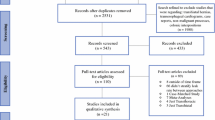Abstract
Objective
We aimed to clarify the association between anastomotic leak and leak-associated mortality to assist decision-making and reduce hospital mortality.
Background
Anastomotic leak is a common complication after esophagectomy, but the nature of its relationship to leak-associated mortality has not been established.
Methods
A retrospective review of all esophagogastric anastomotic leaks that had occurred between 2008 and 2012 at our institution (n = 246) was performed. Risk factors for leak-associated mortality were determined using a multivariate logistic regression analysis.
Results
Of the 246 patients with anastomotic leaks, 14 (5.7 %) died. Leak-associated mortality rates were similar regardless of anastomosis location (cervical vs. thoracic anastomosis), surgical approaches (retrosternal vs. prevertebral reconstruction route) and anastomotic techniques (hand-sewn vs. mechanical anastomosis). When a leak occurred, risk factors for leak-associated mortality as determined by multivariate logistic analysis included patient age >60 years (P = 0.029) and the occurrence of the leak within 1 week of surgery (P = 0.039). When disease worsened after treatment, leak-associated mortality was more frequent in patients requiring reintubation (25.6 vs. 1.4 %, P < 0.001). Fatal bleeding and sepsis were the most common causes of leak-associated mortality.
Conclusion
In patients with anastomotic leaks, patient age >60 years and the occurrence of the leak within 1 week of surgery were risk factors for leak-associated mortality. Increased efforts to reduce the incidence of early anastomotic leaks within 1 week after surgery and prevent the need for reintubation are important for improving patient prognosis.



Similar content being viewed by others
References
Hulscher JB, van Sandick JW, de Boer AG et al (2002) Extended transthoracic resection compared with limited transhiatal resection for adenocarcinoma of the esophagus. N Engl J Med 347:1662–1669
Liu JF, Wang QZ, Ping YM et al (2008) Complications after esophagectomy for cancer: 53-year experience with 20,796 patients. World J Surg 32:395–400. doi:10.1007/s00268-007-9349-z
Markar SR, Karthikesalingam A, Penna M et al (2014) Assessment of short-term clinical outcomes following salvage esophagectomy for the treatment of esophageal malignancy: systematic review and pooled analysis. Ann Surg Oncol 21:922–931
Biere SS, Maas KW, Cuesta MA et al (2011) Cervical or thoracic anastomosis after esophagectomy for cancer: a systematic review and meta-analysis. Dig Surg 28:29–35
Kassis ES, Kosinski AS, Ross P Jr et al (2013) Predictors of anastomotic leak after esophagectomy: an analysis of the society of thoracic surgeons general thoracic database. Ann Thorac Surg 96:1919–1926
Rutegård M, Lagergren P, Rouvelas I et al (2012) Intrathoracic anastomotic leakage and mortality after esophageal cancer resection: a population-based study. Ann Surg Oncol 19(1):99–103
Crestanello JA, Deschamps C, Cassivi SD et al (2005) Selective management of intrathoracic anastomotic leak after esophagectomy. J Thorac Cardiovasc Surg 129(2):254–260
Cooke DT, Lin GC, Lau CL et al (2009) Analysis of cervical esophagogastric anastomotic leaks after transhiatal esophagectomy: risk factors, presentation, and detection. Ann Thorac Surg 88(1):177–184
Markar SR, Arya S, Karthikesalingam A et al (2013) Technical factors that affect anastomotic integrity following esophagectomy: systematic review and meta-analysis. Ann Surg Oncol 20(13):4274–4281
Lerut T, Coosemans W, Decker G et al (2002) Anastomotic complications after esophagectomy. Dig Surg. 19(2):92–98
Low DE, Alderson D, Cecconello I et al (2015) International consensus on standardization of data collection for complications associated with esophagectomy: Esophagectomy Complications Consensus Group (ECCG). Ann Surg
Li B, Chen H, Xiang J et al (2012) Pattern of lymphatic spread in thoracic esophageal squamous cell carcinoma: a single-institution experience. J Thorac Cardiovasc Surg 144:778–785
Schaheen L, Blackmon SH, Nason KS (2014) Optimal approach to the management of intrathoracic esophageal leak following esophagectomy: a systematic review. Am J Surg 208(4):536–543
Turkyilmaz A, Eroglu A, Aydin Y et al (2009) The management of esophagogastric anastomotic leak after esophagectomy for esophageal carcinoma. Dis Esophagus 22(2):119–126
Sauvanet A, Mariette C, Thomas P, Lozac’h P, Segol P, Tiret E, Delpero JR, Collet D, Leborgne J, Pradère B, Bourgeon A, Triboulet JP et al (2005) Mortality and morbidity after resection for adenocarcinoma of the gastroesophageal junction: predictive factors. J Am Coll Surg. 201(2):253–262
Junemann-Ramirez M, Awan MY, Khan ZM et al (2005) Anastomotic leakage post-esophagogastrectomy for esophageal carcinoma: retrospective analysis of predictive factors, management and influence on long term survival in a high volume centre. Eur J Cardiothorac Surg 27(1):3–7
Alanezi K, Urschel JD (2004) Mortality secondary to esophageal anastomotic leak. Ann Thorac Cardiovasc Surg 10(2):71–75
Tandon S, Batchelor A, Bullock R et al (2001) Peri-operative risk factors for acute lung injury after elective oesophagectomy. Br J Anaesth 86(5):633–638
Morita M, Yoshida R, Ikeda K et al (2008) Acute lung injury following an esophagectomy for esophageal cancer, with special reference to the clinical factors and cytokine levels of peripheral blood and pleural drainage fluid. Dis Esophagus 21(1):30–36
Martin LW, Swisher SG, Hofstetter W et al (2005) Intrathoracic leaks following esophagectomy are no longer associated with increased mortality. Ann Surg 242(3):392–399
Schweigert M, Solymosi N, Dubecz A et al (2013) Endoscopic stent insertion for anastomotic leakage following oesophagectomy. Ann R Coll Surg Engl 95(1):43–47
Nguyen NT, Rudersdorf PD, Smith BR et al (2011) Management of gastrointestinal leaks after minimally invasive esophagectomy: conventional treatments vs. endoscopic stenting. J Gastrointest Surg. 15(11):1952–1960
Acknowledgments
We thank Huixun Jia (Department of biostatistics, Fudan University Shanghai Cancer Center) for her contribution to the statistical analysis in this article.
Author information
Authors and Affiliations
Corresponding author
Ethics declarations
Conflict of interest
The authors declaim no grant support for the research reported and no conflict of interest.
Rights and permissions
About this article
Cite this article
Li, B., Xiang, J., Zhang, Y. et al. Factors Affecting Hospital Mortality in Patients with Esophagogastric Anastomotic Leak: A Retrospective Study. World J Surg 40, 1152–1157 (2016). https://doi.org/10.1007/s00268-015-3372-2
Published:
Issue Date:
DOI: https://doi.org/10.1007/s00268-015-3372-2



